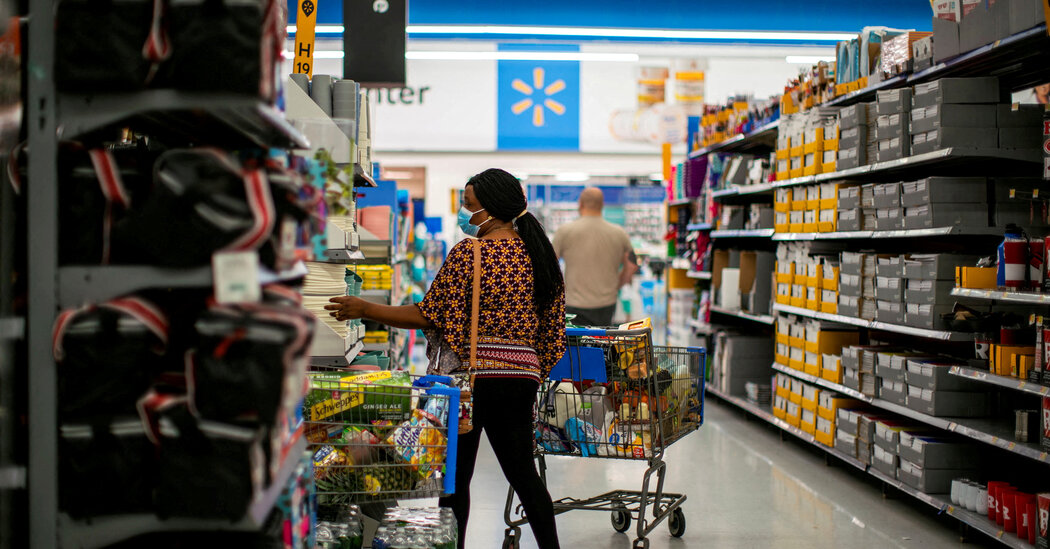Wal-Mart, the largest US retailer, on Thursday reported stronger-than-expected growth in sales and profits as it attracted more shoppers willing to open their wallets, in a sign that consumer spending, the engine of the US economy, remains resilient.
The company’s comparable sales rose more than 6 percent in the second quarter from a year earlier, comfortably beating Wall Street expectations. Grocery sales were particularly strong, the company said, while spending on general merchandise was down slightly.
“We’re seeing households who are aware of what they’re spending on,” Walmart CEO Doug McMillon said on a call with analysts. “They prioritize and spend on the things they care about the most.”
Executives noticed that shoppers were buying more specialty brands, groceries, and meal options to eat at home.
Foot traffic and the amount spent per ride rose in the most recent quarter from Walmart Stores in the US. The company also recorded a 24 percent increase in e-commerce sales. It raised its full-year growth forecast for the second straight quarter.
Walmart’s results capped a week of major retailers opening their books, including Home Depot, Target and TJX, which owns TJ Maxx and Marshalls. Home Depot and Target reported declines in their most recent quarterly sales, while TJX’s off-price retailers reported a larger-than-expected increase in sales and the company revised its full-year forecast higher, as did Walmart.
The earnings provide a glimpse into consumers’ buying habits as they continue to beat stubborn inflation and shift their spending from items like furniture and electronics to services like travel, eating out and going to the movies. Higher prices have brought new shoppers to Walmart — in the form of higher income earners buying cheap groceries and other necessities at the supermarket — while also squeezing purchases of discretionary products like clothing and home goods.
Executives at a variety of retailers have acknowledged this trend.
Walgreens Boots Alliance CEO Rosalind Brewer recently told analysts that “a more cautious, value-driven consumer” has weighed on sales. She said clients were “feeling the pressure” of rising inflation and interest rates, as well as general economic uncertainty and the end of several pandemic stimulus measures. “They’re cutting back on discretionary and seasonal spending, and they’re responding aggressively to promotional activity,” she said.
However, consumer spending has largely held up, driven by a flexible labor market and rising wages. Retail sales in July rose 3.2 percent from a year earlier, according to data released on Tuesday, beating economists’ expectations. In July, many retailers run promotions around Amazon Prime Day, which has become an important sales event during the summer.
“Fears of a recession, or at least a severe recession, have largely subsided, and the consumer is generally healthy,” Home Depot CEO Ted Decker said Tuesday on an earnings call.
But retail industry watchers note that resuming student loan payments in October could weigh on consumer spending, and executives largely expect spending to be lower for the rest of the year.
“The upcoming resumption of student loan payments will put additional pressure on the already strained budgets of tens of millions of families,” Michael Videlek, Target’s chief financial officer, told analysts Wednesday. “Against this background, we remain cautious in our planning.”
Wal-Mart reported a revenue increase of about 6 percent in the second quarter. It expects sales to grow for the full year between 4 and 4.5 percent.
Once back-to-school spending ends, retailers and analysts will look to the crucial holiday shopping season to gauge the health of American consumers. Shoppers will start to see those seasonal products, such as lanterns, ornaments, and artificial Christmas trees, being introduced within a few weeks.
“Normally when back-to-school is strong, it bodes well for what happens around Halloween and Christmas,” Mr. McMillon said.
